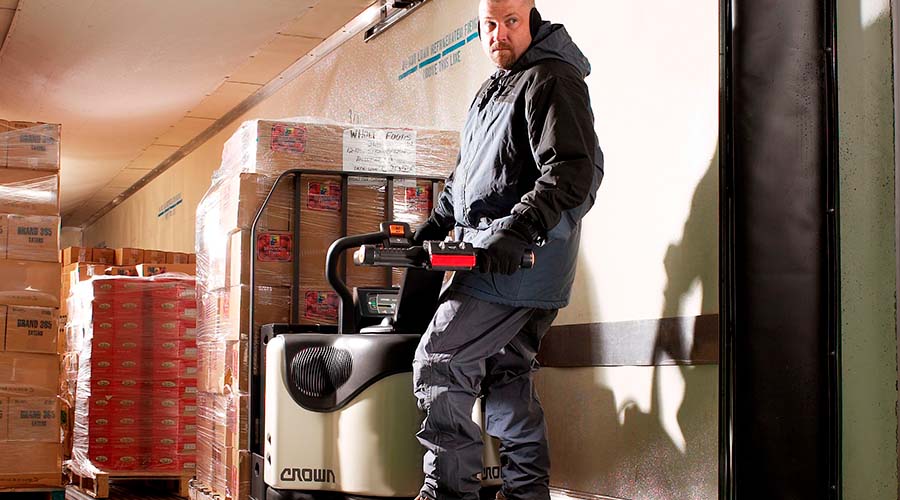Braving the Cold Year-Round: Five Tips for Cold Storage Lift Truck Operation

As we look forward to packing away our heavy coats, gloves and scarves for the season, it seems many of us are eager to leave the brutal cold of winter behind as warmer, spring weather approaches. However, for those in cold storage warehouses, bundling up to contend with cooler climates is a daily, year-round occurrence. Below are some tips to help ensure safe, productive and efficient lift truck operation in your cold storage environment.
1. Prioritize productivity
To combat high energy costs associated with cold storage, it is important to prioritize productivity. Lift truck durability and reliability are key to keeping utilization high. By implementing a fleet management system, you can collect and analyze data to see where your lift trucks are being used, how many hours each truck operates and identify productive operators.
2. Select the right lift truck
When it comes to cold storage applications, not all lift trucks are created equal. Consider enhancements like freezer conditioning packages and options that help reduce operator fatigue, including power steering for rider pallet trucks. Equally critical is having the right maintenance program to help ensure uptime – especially for batteries and chargers, which can be negatively impacted by cold environments.
3. Consider your operators’ comfort needs
It is vital to have lift trucks designed with features like heated cold store cabins and ergonomic seating. These allow operators to work more comfortably throughout their shifts. At the very least, the operator compartment should provide enough room for operators’ outerwear, and controls should be designed for use by operators wearing thick gloves.
4. Make safety key
A strong safety culture is vital to creating and maintaining a protected working environment, especially in cold storage applications. It’s not just about the quality of the training, but also the accessibility of the training. Consider lift truck options and features that improve visibility and safety, particularly in cold environments where floors can be slippery and protective outerwear can hinder pedestrian and operator sightlines or hearing capabilities.
5. Use data to your advantage
Utilize the wealth of data that can be gathered from your fleet by establishing a plan to share relevant insights with the right parties at the right time. Data should be presented in a manner that makes it easy to understand, which can allow for operational impacts and behavioral changes.